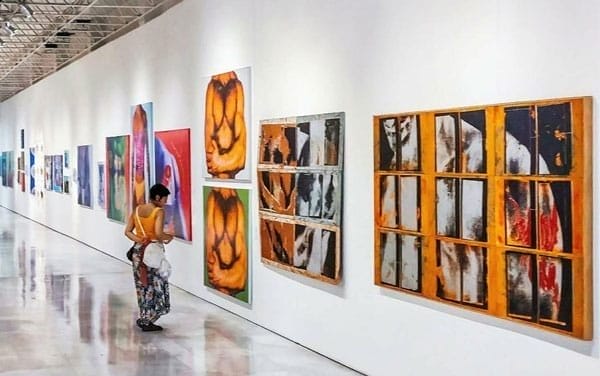
The first step to having your work accepted by an art gallery is to contact them and make an application. Many artists feel intimidated at the thought of writing a good art gallery cover letter to present themselves and their art to a gallery.
Why Art Galleries are Important to Artists
Art galleries serve many purposes today. They are not just for art lovers anymore. They are more of a social gathering spot where people can come to share their love of art, express themselves, and explore the different types of artistic expression.
For any new artist, the art market is a tough business to break into. There are many factors that contribute to this unease, such as an abundance of talented artists, challenges in getting noticed in the digital age, and galleries that overwhelm with their size and offerings.
But, as they say, nothing ventured, nothing gained so while it may not be easy, the effort is worthwhile when you get your first acceptance. Applying to local galleries can make it easier to sell your work and offers the best chance of your art being seen, talked about, and ultimately sold.
To promote your art through submission to art galleries, you need to create a portfolio of artwork and write a brief, but impactful artist statement about your pieces. Before they look at your work or read the artist statement, the first thing a gallery Owner/Curator will see is your cover letter. As the saying goes, first impressions are everything.
Writing a Art Gallery Cover Letter to Present Yourself and Your Work
An Art Gallery Cover Letter is essentially a brief summary of your resume and generally contains three to four paragraphs. There should be no spelling errors and it should be written from you, not your agent or an imaginary third person. It is typically concise and straight to the point, so it’s important not to drag on with unnecessary information. It is a good idea to include some general information about yourself and your artistic style.
Here are a few points to consider to give you a guide:
- Find out the name of the person it should be written to. Don’t be too familiar, (unless they are a friend) use full names not first names. Many times this information is available on a Gallery’s website.
- Begin with an introduction of who you are and why you are sending samples of your work.
- Briefly describe what you do and your current notable achievements.
- Highlight information such as your degree, recent awards and any recent achievements.
- Briefly describe your artwork. Keep to the point!
- Offer to send additional materials if they are required, or arrange a face to face review of your work. If materials are to be returned to you, mention that you have included a self-addressed stamped envelope for their return.
- If the gallery is allowed to keep your materials, CV included; mention that as well. Be sure to include a “Thank you”.
- Make sure you hand sign your printed letter, stick to one style of font for all your materials, CV, notes ect.
Gallery curators are responsible for selecting art pieces for art in a gallery. They must be knowledgeable about a wide range of artists and genres, as well as be able to filter through a high volume of submissions. The curator is responsible for selecting pieces that can communicate a curated narrative to the public through transitions in style, medium, and color. A good cover letter will provide the gallery curator with the information they need to make a decision about your artwork.






